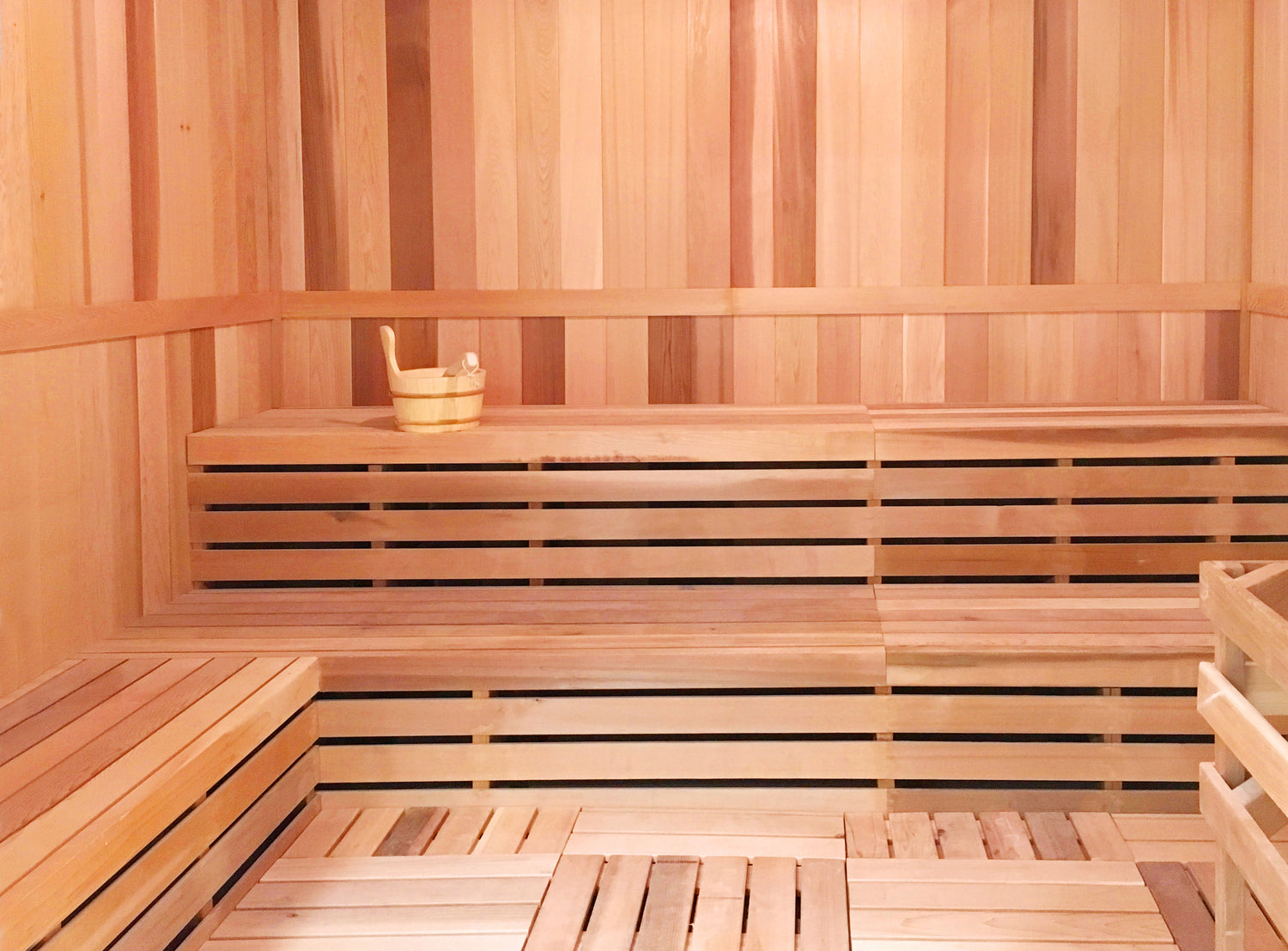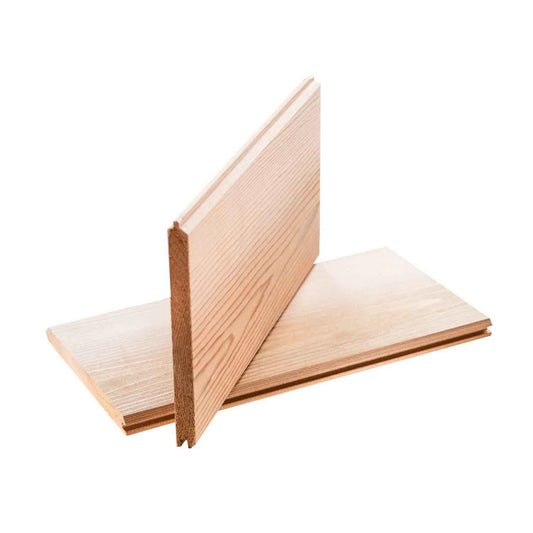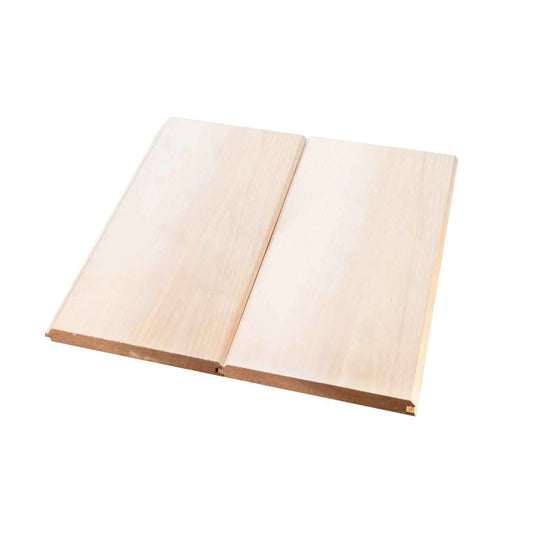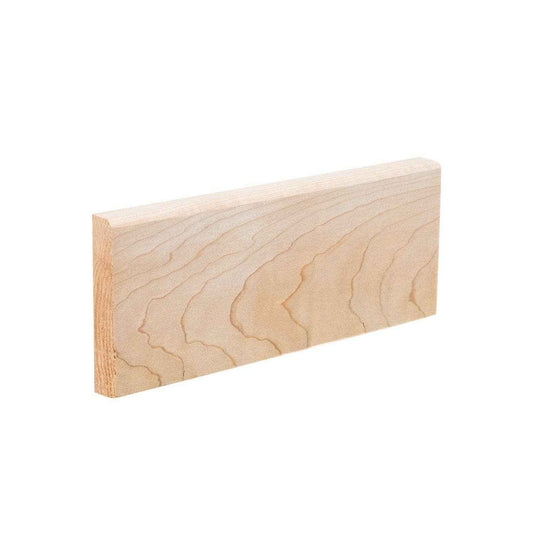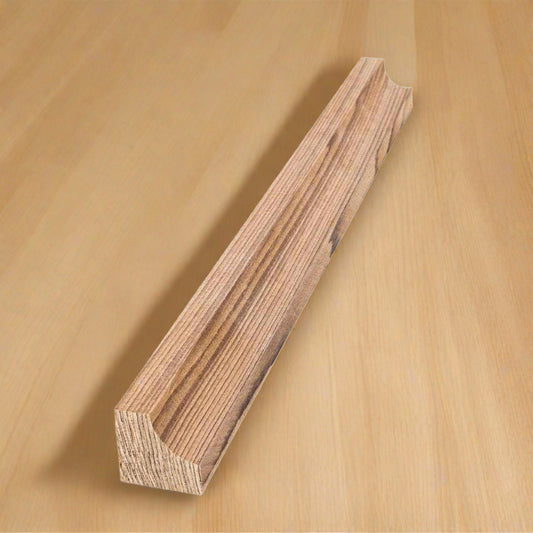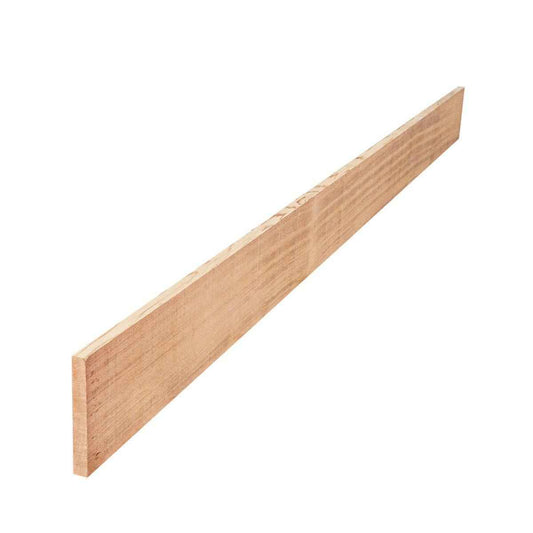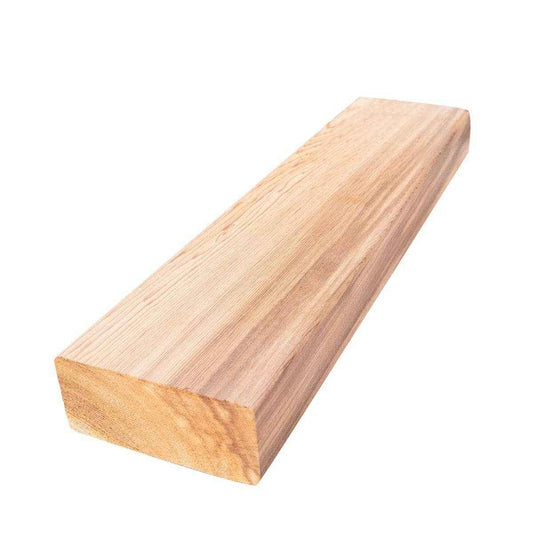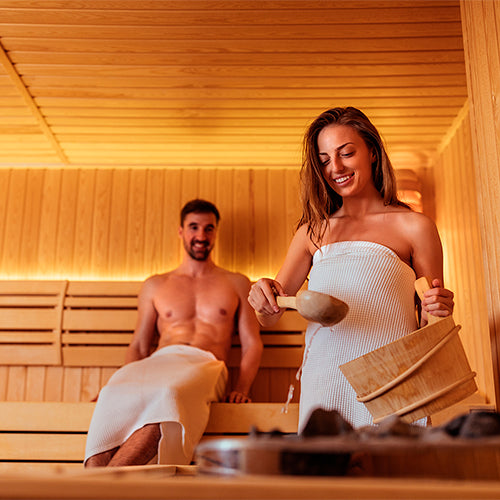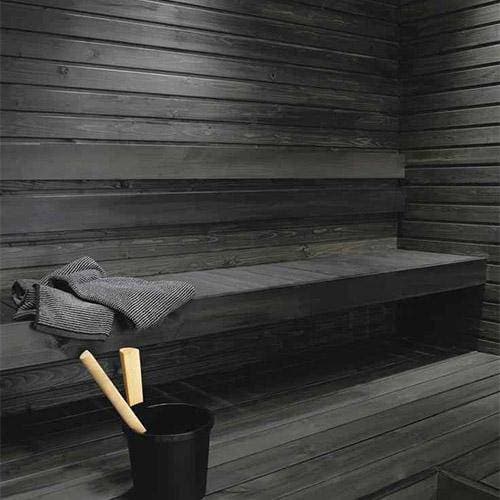-
Sauna Wall Material - Grade A Western Red Cedar Tongue and Groove
Vendor:Scandia ManufacturingRegular price From $50.00 USDRegular priceUnit price per -
Sauna Bench Tops - Grade A Western Red Cedar 1" x 4"
Vendor:Scandia ManufacturingRegular price From $18.00 USDRegular priceUnit price per -
90° Sauna Inside Corner Trim - DIY Sauna - Replacement Pieces
Vendor:Scandia ManufacturingRegular price From $12.00 USDRegular priceUnit price per -
Sauna Wall Trim - Grade A Western Red Cedar
Vendor:Scandia ManufacturingRegular price From $14.00 USDRegular priceUnit price per -
Sauna Bench Supports - Grade A Western Red Cedar 2"x4"
Vendor:Scandia ManufacturingRegular price From $14.00 USDRegular priceUnit price per
Sauna wood FAQs
Types of wood you can use in a sauna
SPANISH CEDAR
Spanish cedar wood comes from a tree ranging from 210 to 230 ft tall and 10 to 23 ft in trunk diameter. The soft red-brown timber has a straight grain and few knots. The wood panels have a distinct appearance, aroma, and high natural resistance to decay.
cedar woods do not expand or contract as much as other woods when the temperature fluctuates, making them great for indoor and outdoor applications. Cedar Panels are commonly priced by square foot.
ALASKAN YELLOW CEDAR
Alaskan Yellow Cedar is a Cypress tree (not a cedar) once used by western Native American tribes to fashion totem poles. It is highly resistant to fungus and decay and is mainly chosen for its appearance – an attractive yellow color. It is aromatic but not as pleasant as the Spanish cedar wood.
WESTERN HEMLOCK
Western Hemlock is less resistant to decay than the previous two and can expand slightly. It is solid wood but can emit a faint sour smell when it is fresh.
POPLAR WOOD
There are many Poplar species; most are soft and porous, which means they get average marks in tests for strength, resistance to decay, and durability. Poplar isn't well suited for sauna interiors and benches; it is best used for exteriors with excellent durable marks.
The type of wood used to build a sauna makes all the difference in how well the sauna will age and how well it will endure daily use.
Which is the best wood for a sauna?
Spanish Cedarwood is considered the best and most popular wood to build a sauna; it has a pleasant aroma and vivid reddish color that gives a unique look to your sauna; the timber doesn't warp or shrink beside the high temperatures of the sauna. Cedar woods also has excellent heat distribution properties (it doesn't get too hot to the touch), making it the best choice for a sauna building. Excellent heat insulation means your sauna will heat up more quickly and retain the heat for longer.
Cedar's aroma has a very distinctive scent that's very popular amongst sauna users and builders. The wood must be left untreated to protect its natural aroma. The smell of softwoods like spanish cedar or hemlock aroma can last for years. Cedar sauna wood paneling size will depend on the sauna builder. Each sauna tongue & groove paneling board should be milled to perfection.
However if you want a scentless sauna, then Poplar wood is a nice alternative to spanish cedar, pine and hemlock. Poplar sauna wood paneling have a crisp and clean look and have relatively few nots.
An important thing to bear in mind when choosing a sauna wood is for the type of sauna it will be. Traditional and infrared saunas are subjected to very different conditions and temperatures. On a traditional sauna the average temperature is of 170ºF, the humidity is increased by the steam generated of the water poured over the rocks, so naturally the sauna wood will experience much more stress than an infrared sauna where there is no humidity since the heat is generated by carbon and ceramic heaters and the average temperature is of 120ºF.
Does sauna wood need treatment?
The only treatment you should do to your sauna wood is to apply sauna wood oil to restore and add extra protection to your sauna.
Sauna wood needs to absorb and release humidity and heat slowly. If you paint, stain or varnish the sauna interior, you could make the wood surface much hotter than left untreated. This creates the possibility of fumes resulting from the wood treatment and takes away the potential of the steam and heat penetrating the wood.
Using sauna wood oil is safe to use. It helps keep sauna wood looking clean by not allowing excess moisture to soak into wood fibers.
The oil should be 100% organic with non-toxic aromatic oils and no chemical additives. This is also for your health; the oil should be 100% clear petroleum-based oil.
Never paint, stain or varnish your sauna with products not made specifically for it, when heated they can be toxic and will release toxins into the air.
How to clean sauna wood?
Use dish detergent mixed with warm water to clean your sauna if you happen to track dirt and dust inside on the benches and the wall.
We recommend cleaning your sauna once a month if you are a frequent or regular user. Keep your sauna with a fresh smell mopping the floors with a chemical-free detergent. Maintaining your sauna clean is the best way to care for your investment.
Your home sauna should be off while you're cleaning it. If you clean your sauna while the heater is working, it will put unnecessary strain on your body. Also, cleaning chemicals react differently when they are exposed to high temperatures; inhaling the fumes of these chemicals could cause respiratory issues.

